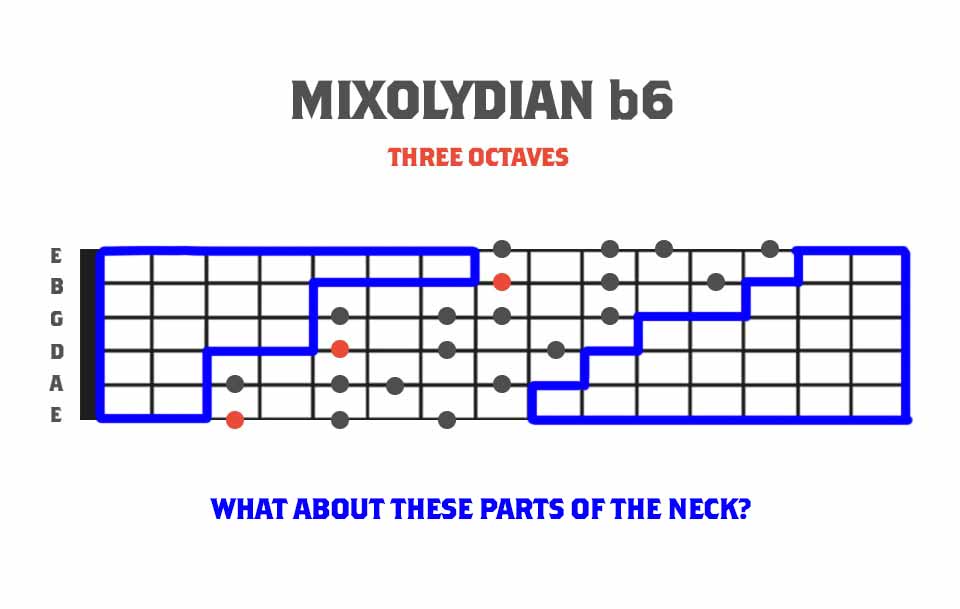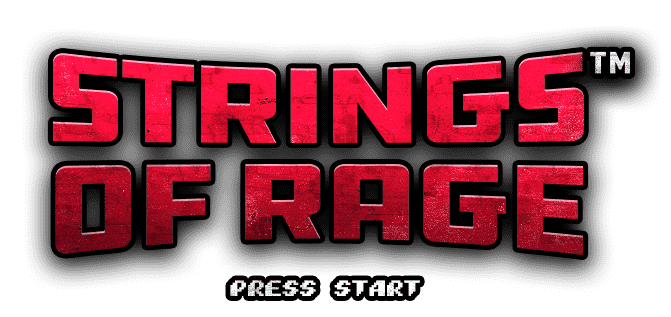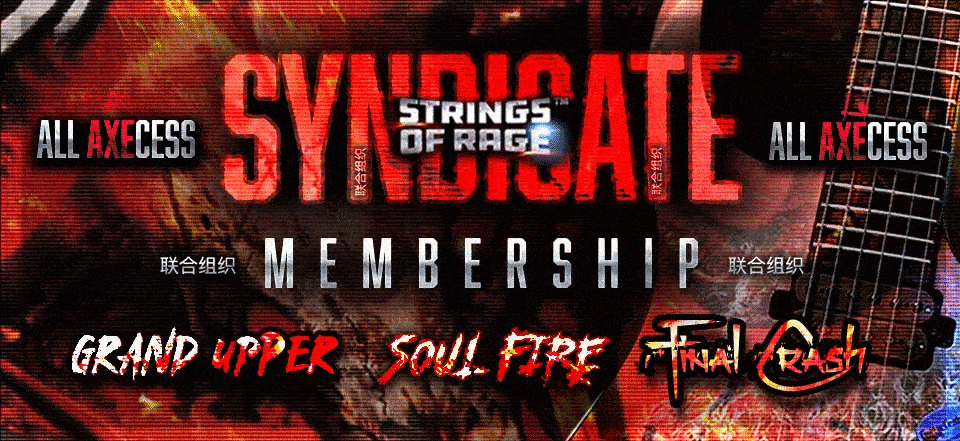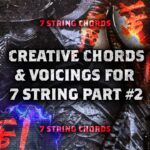In this lesson we’re going to break down the ultimate fretboard visualisation method. The interval system, also known as Intervallic Functions. You commonly see this fretboard visualisation method used by Jazz and Fusion guitarists such as Frank Gamble, Tom Quayle, Jack Gardiner, Guthrie Govan & Allan Holdsworth to name a few. All who are massive inspirations to us.
The Intervallic Function System, allows for true fretboard mastery. This goes way beyond 3nps scales, pentatonic box shapes, root position arpeggios and aims to prevent general noodling and instil intelligent note choices.
THIS is the system that will, beyond any doubt, take your playing and fretboard visualisation into the stratosphere if you’re willing to put in the work. Learning the intervals for guitar, or rather the intervallic function system, is vital to becoming a truly grounded musician. The learning hurdle for this method is quite a challenge but the payoff is greater than the hurdle is hard. In this lesson we’ll take a proper look at what it is and how to really understand and get to grips with this system that will enable true fretboard mastery regardless of what style of music you play. Being able to properly understand the fretboard applies to any genre of music.
Just like every modern player we’re always on the quest to expand our horizons. And what better way to do that than try to tackle the most freeing fretboard visualisation system of them all. This guide will help those players who have come to a plateau and are feeling stuck in a rut with 3nps scales and modes, just as we once were.
This is a very in-depth look at some vital guitar and music theory so brace yourself. Let’s do this!

Contents for This Lesson:
Use these links to jump to the section of interest or start from the top to cover everything.

Why use the interval system? aka Intervallic Functions
Most importantly because it’s the true global language of music and the language you should be using. Intervals translate to any other instrument which means you can collaborate seamlessly with a keyboard player, trumpet, sax, bass, even vocalists. Even as a solo multi-instrumentalist you’ll be able to translate your ideas to other instruments. Let’s imagine for a moment you’ve come up with a nice sequence using a 3nps mode shape and you now want to replicate that on a keyboard. Without knowing the intervals this becomes very difficult. You’d either have to know intervals, or note names. Neither of which are shape based. Moreover, you wouldn’t be able to tell a horn player how to play a melody with fret numbers and scale shapes.
Specifically for guitar though, using intervals to understand the guitar neck will make for true fretboard freedom. Who doesn’t want that? Learning the intervals for guitar is the way to truly break out from 3nps scale shapes, pentatonic boxes, CAGED system and ‘cowboy’ shapes for chords and arpeggios.
Breaking Out of Box Shapes and Big Patterns for Better Fretboard Visualisation
Using the intervallic functions system means being able to play all over the neck without being confined to some sort of box shape. Not only this but you’ll be able to make conscious ‘note choices’ which will help you truly understand what you’re playing and ultimately be a better musician. No more will you have to randomly noodle within the confines of a box shape hoping to hit on something great.

With dedication, this system will allow you to be able to visualise any chord or scale quickly anywhere on the neck. Don’t be fooled however, this is not some ‘secret’ or shortcut to fretboard visualisation. Such things on the instrument do not exist it takes time and effort on your part but the results are achievable.
Your should be fretboard visualisation should be SO good that if you’re confronted with any chord or scale formula you won’t even have to think about it. You’ll just be able to pick and play those intervals from a given root anywhere on the neck in any direction. How you play them is down to your own creativity. THIS is the goal.

What is the Intervallic Functions Fretboard Visualisation system?
This system is one of many methods of being able to ‘see’ or ‘navigate’ the fretboard on the guitar. A solid grasp of fretboard visualisation will allow complete freedom on the guitar neck through a thorough understanding of how individual intervals ‘function’ in relation to a root note.
Intervals Functioning Against The Root Note
Understanding how intervals ‘function’ compared to a root note is the vitally important concept here. We do not need to be concerned with the distance between any two notes and the interval that yields, but rather intervals in relation to a given root note. We also only have to learn each of these intervals in relation to a root in one octave only, because the minute you reach the octave of your root, you can now reference the intervals from that one instead. This is how you begin to move across the neck with conviction.
You must know every interval in every permutation from a given root note. This sounds like a lot of work, and although it is, it is SIGNIFICANTLY less work than trying to remember many, many larger 3nps style shapes for every scale or arpeggio you want to learn. With this in mind, here all all the intervals referenced against A as the root note.
Caveat For The Interval System
The caveat is that this system requires you to fully understand both chord (and ergo arpeggios) and scale formulas. Without this prior knowledge this system doesn’t work. If you’re reading this lesson its likely that you know your basic music theory and have most of this internalised. If you’re unsure about formulas then keep reading because we’ll give you an overview.

Basic Music Theory: Formulas
A formula is a series of pre-defined intervals that make up a scale, chord or arpeggio. Also referred to as an interval structure. In music we use a global generic numbering system to name intervals. This makes things incredibly easy and translates across all instruments. Instead of using the number 1 however, we use the letter R to define the root note.everything else will be referenced against this at any given time.
The complete chromatic numbering system goes like this:
R, b2, 2, b3, 3, 4, b5, 5, b6, 6, b7, 7
This accounts for all 12 notes of western music. Don’t forget that b5 can also be considered a #4 and likewise a b6 can also be considered a #5. These are called ‘enharmonic’ notes or intervals because they sound the same but are labelled differently. This will depend on the context.
Interval Numbering System
- Minor 2nd Interval – Root → b2
- Major 2nd Interval – Root → 2
- Minor 3rd Interval – Root → b3
- Major 3rd Interval – Root → 3
- Perfect Fourth Interval – Root → 4
- Diminished Fifth / Augmented Fourth Interval – Root → b5 / #4
- Perfect Fifth Interval – Root → 5
- Minor 6th Interval / Augmented Fifth Interval – Root → b6 / #5
- Major 6th Interval – Root → 6
- Minor 7th Interval – Root → b7
- Major 7th Interval – Root → 7
- Octave Interval – Root → Root
Fretboard Visualisation: The Major Scale Basis
In music, specifically with formulas, everything is compared to, and is therefore an alteration of, the major scale. The major scale is the easiest of all scales to remember. Its formula is simply R, 2, 3, 4, 5, 6, 7. It has all natural intervals, no sharp or flat intervals. Even if your root note was C# or Eb for example, the interval structure or formula remains same. This is why a numbering system makes your life easier when it comes to memorising these things.
You can play or ‘build’ any major scale from any root note using this formula. This is one of the advantages of the interval system. It doesn’t matter what note you build your scales and arpeggios from, the interval numbering system makes it easy. Every single other scale or mode can be made by making changes to the major scale in some way.
If you’re not confident with remembering formulas for everything then you could instead remember how it differs to the major scale. For example, the Dorian mode formula is R, 2, b3, 4, 5, 6, b7. Compare this to the major scale and all we’ve done is flatten the 3rd and the 7th. If you really know your intervals you’ll be able to play and see this formula all over the neck from your given root note.
More Formula Examples
Here’s a few more examples to quickly demonstrate a formula. Be aware that you can omit the perfect fifth to yield a ‘shell voicing’. This leaves only the colour notes of the chord or arpeggio. The fifth is regarded as a ‘neutral’ type of sound it doesn’t greatly assist in producing the true sound of the chord. You can leave it in if the voicing needs it or if you want to make the chord ‘bigger’. Up to you.
Major 9th Chord / Arpeggio → R, 2, 3, 5, 7
Minor 7th Chord / Arpeggio → R, b3, 5, b7
Lydian Dominant Mode → R, 2, 3, #4, 5, 6, b7
Locrian Mode → R, b2, b3, 4, b5, b6, b7

Comparisons To Other Systems & Why This Is Better.
The Interval System vs 3nps System
WARNING: If you come from a 3nps background background this is going to feel like a massive uphill struggle. However with every massive struggle come massive reward. And believe us, the reward is well worth the hard work. This is by no means to say we’ve mastered it, far from it, but this has absolutely changed our playing for the better.
The results we have achieved from properly learning this visualisation system have been absolutely incredible. To the point where playing ALL OVER the neck with any scale is no problem at all. We’re not joking. Coming from a 3nps background has definitely made the transition easier. Learning the interval system from the start however, would be better still.
Before we get into the “interval system” we’re going to compare this to the 3nps system. Most intermediate to advanced players will be using or have an understanding of 3nps and how it works. We’ll then show you why the interval system is by far the best fretboard visualisation system out there.
Fretboard Visualisation using 3nps, 4nps and 3 Octave Combos
Ah the dreaded 3nps bear traps. And who can blame them? These are what most players who are advancing their knowledge of the instrument will turn to. They are one of the most widely taught ways to learn scales. We’ve even done so here on Strings of Rage™ as they can provide a good basis to start from. 3nps scales allow for an introductory way to quickly learn the ‘sound’ of each mode. You can do this by comparing it to the major scale from the same root note. This can be an initial good exercise for understand how each scale or mode differs from the major scale.
Problems With Using Three Note Per String Scales
Now a quick disclaimer. We also came from a 3nps background and for many years they have served us well. While they allow for quick and almost immediate results for understanding what a given scale or mode sounds like, they are not conducive for a long term deep understanding of scales, modes and arpeggios. The problem with this system is that it most commonly forces you into a pre-set 5th or 6th string root shape.
The other issue here is that 3nps shapes generally make you to play the scale from the root with your index finger. This further corners you into one way of playing, thus neglecting other areas of the guitar neck.
What then happens is that players will memorise these big shapes but not really understand the intervals within. For example here’s a 3nps shape for G Phrygian, the 3rd mode of the Eb major scale.
We’ve indicated the intervals compared to the G root on these shapes. HOWEVER they are very commonly shown as dots without intervals indicated. This turns the learning into shape memorisation and not interval memorisation. This is the biggest hinderance.
Players will play up and down these shapes, which is very easy to do given that they are 3 notes on every string, and almost pick notes from a shape at random trying to formulate melodies and licks in this way.
Problems With Extended Scale Shapes
The problem that then arises here is that if you want to play G Phrygian across the whole neck. How do you do that? You’re suddenly stuck and forced into a 3nps “corner”. The same thing is true for the 4nps shapes and the 3 & 4nps combo shapes. You’ll cover more ground with those shapes for sure. But even so, you’ve still neglected 50% of the fretboard since the bigger shapes move in a linear fashion across the neck going up to the high E string. What about the rest of the neck in the other directions?
You end up developing a library of licks and ideas that you’d play over everything. This does work for a while but what happens is that everything you play begins to sound the same. If you play on the basis of choosing and playing specific intervals you can cover chord changes no problem. Even highly specific intervals that might be unique to the chord you might be playing over can be highlighted.
Beyond that you can even begin to imply sounds over more basic chords such as triads. A knowledge of intervals would allow you to ‘add’ intervals to the chord that is playing. This allows you to ‘imply’ different sounds and tonalities at will.
Example Using Mixolydian b6
Here’s a 3 octave Mixolydian b6 mode. This is mode 5 of the Melodic Minor Scale. It uses 3 and 4 notes per string to break out of ‘single position’ and moves in three octaves across the neck. Even with that though, you can see on the diagram below, that you’ve still neglected 50% of the neck. Learning patterns instead of intervals means you won’t necessarily know how to move outside of the shape. It is yet another shape and another finger combination you have to memorise.

Another Example Using Phrygian Dominant: 3nps Versus Interval System
Here’s a direct comparison between the two systems. For this example we’ll use the Phrygian Dominant mode which is mode number five of Harmonic Minor.
This is a low E string root 3nps ‘A’ Phrygian Dominant Mode. This is all well and good but it will only get you so far. If you want to play this from the A string in root position, what do you do then? You’ve then got ANOTHER shape for just one mode. The same goes for the other strings. You’ll end up having to remember loads of ‘big shapes’ for each and every scale, chord, or arpeggio that you go on to learn.
This means the more you want to learn, the more ‘shapes’ you’ll have to remember and the harder it becomes to recall them in real time. What happens if you want to move beyond this shape and play across the neck in any direction? A 3nps ‘bear trap’ will do exactly that, it will trap you into one portion of the neck. You’re forced into those preset shapes. These scale shapes almost tell YOU what to play.
Scale Examples Using The Interval System
This is also A Phrygian Dominant but now using the Interval System. If you really know your intervals well enough this is exactly how you should be able to see any scale or mode, all over the neck. The main advantage here is that you’ve only had to memorise and internalise small chunks of information, i.e the single intervals in comparison to the root.
Now, rather than being forced into one area of the fretboard, you’ll know where all the intervals are in any direction in relation to a given root note, in this instance ‘A’ , anywhere on the fretboard thus opening up true fretboard freedom.
Here’s yet another way to play this mode. Because we’re thinking intervals, the number of notes per string becomes irrelevant. You should be able to play your scales and arpeggios from any finger. The beauty of being able to play in this way is that the different fingerings will yield different results. You’ll likely come up with more interesting ideas as a result. This is one of the biggest differences we’ve noticed in our own playing, new ideas for approaching leads and therefore chords and chord voicings.
Learning The Notes of The Guitar Neck
Knowing the notes of the guitar all over the neck is NOT essential for the interval system. However it will be worth knowing and you WILL get to a point where this can only help you further. We have found that by learning this system we’ve been able to learn the notes at the same time. When using the interval system you only ever need to know or reference one root note at any given time. You should be relating each interval TO THE ROOT of the chord or riff you’re playing over. This is of vital importance. You do not need to know the distance between each pair of intervals but rather it’s relationship to the root. This is absolutely vital.

What About Chord Progressions?
What if you want to really outline the right notes of a Phrygian chord for example or even play a Phrygian arpeggio. That’s a minor 7b9 chord – how would you do that with a 3nps shape? The answer is you can’t. Well not easily. You know a ‘shape’ rather than the FORMULA for the scale or the chord. If you know a 6 string shape for the Phrygian Mode you can’t do much else with it. If you know the intervals in the mode and you can play using intervals on the fly then you’ll be able to evoke chordal and modal sounds with real conviction.
What if your chord progression then goes to C Lydian?
Using the 6 string root 3nps system you’ve then got to make a huge jump from playing G Phrygian from fret 3 on the low E to then playing a DIFFERENT SHAPE for C Lydian from the 8th fret low E string. Assuming you know low E string root shapes. Alternatively you’d have to reference yet another 3nps shape from a different root on another string. This would require you to recall another shape for that mode on the fly.
As you can imagine this just isn’t practical and sounds like you’re making the big jumps. At some point you’ll want your playing to sound smooth and connected between ideas, no matter what the chord progression may be.
Other Issues With 3nps Playing
Let’s say you know all the 3nps shapes irrespective of the key you’re in and you can connect all the shapes together and move between shapes. The problem you have now is that if you’re playing over a Phrygian rhythm – you’ll move into either the next or previous shape. You’ll be forever thinking “I’m now in the Dorian position “ or “I’m now in the Lydian position”. You won’t understand how or why those positions are actually still Phrygian because you won’t be thinking intervals but rather “preset mode” shapes. You’ll may not know where the Phrygian mode root notes and intervals will be within these positions. This makes you hesitant to move out of one position because you might not know where the right intervals for what you’re playing over are.
Fretboard Visualisation: Same Notes – Different Intervals
This is another big eye opener for playing ‘to the chord’ and being able to evoke modal sounds properly. As opposed to playing one scale across all the chords you’ll want to evoke the sounds of the chord(s)you’re playing over. The two scale diagrams below illustrate this really well. This is one thing that players, including ourselves, didn’t fully understand until much later in our understanding.
For example C major and E Phrygian have the same notes but completely different intervals. On the face of it you might say, “well I could just play C Major scale over anything in that key because it’s all the same notes”. You could do this but you’d have a hard time really nailing the unique sounds of the chords because you’re not thinking in terms of intervals related to the chord. You’d likely be playing a shape in random fashion. Lets for a moment say you’re playing over an E phrygian rhythm. To really nail the sounds of Phrygian you’ll want to be thinking about its intervals. NOT the intervals of the parent scale.
What About Writing Riffs & Voicing Chords?
Well, the interval system is more of a complete system to learning and mastering the guitar neck. The 3nps scale system will make formulating interesting chords and chord voicings difficult . Intervals allow you to quickly work out any voicing for any chord type as long as you know it’s formula. Something that cannot be achieved with the 3nps systems. Equally if you’re wanting to write some really creative metal riffs, lets say like Per Nilsson from Scar Symmetry, the concept is exactly the same. If you know the formula for the scale you’re writing with you’ll have the whole neck available to you.
Here’s some examples using A minor 7b9. If you know your intervals and your fretboard visualisation is good enough this is how you should be able to see the neck. From this you can formulate your own interesting chord voicings and ways to play 7b9 arpeggios.
More Creative Freedom
With the interval system down you can begin to be more free with your riff writing, lead playing, chords, almost every aspect of writing and creating. Hopefully with time you’ll be able to ‘let go’ and know that whatever you play, you’ll be able to dissect into something that makes musical sense.


How To Learn The Interval Fretboard Visualisation System – Two Different Way to Approach It:
If you’re an intermediate to advanced player and you come from a 3nps background or ‘pattern based’ background much as we did, this will likely make you feel like you’re starting over. Don’t feel like you’re throwing all that stuff away though, there’s still room to retain that knowledge for reference. We want to start small and work our way around the neck. The goal is to learn how to navigate it properly without reliance on big patterns.
We’re assuming you’re using standard tuning E A D G B E for 6 string guitar or B E A D G B E for 7 String or even if you’re on an 8 string you’ll be F# B E A D G B E or maybe even B E A D G B E A. The intervallic function fretboard visualisation system applies to any number of strings. Bass and Ukulele included!
Here’s a couple of ways we would suggest you start to make the transition.
Fretboard Visualisation Learning Approach #1: Learning The Intervals in Order
The first thing to do is be totally aware of your octaves all over the neck. We’ve used A in the example but you can pick any root note to reference your intervals against.
From here we can start to reference every other interval in order against our root note. Be aware whatever you do from your chosen root you’ll need to be able to repeat it from every other root note all over the neck.
Heads Up – G and B Strings
Hopefully this should be obvious but because of the nature of standard tuning your individual interval ‘shapes’ will change when you’re on the G and B strings. Everything moves up one fret because of the major third interval between those strings.
We used ‘A’ as our root and then start with the first interval after, the flat second.
When you’re practicing and finding the intervals, don’t rush. Take your time to really understand the interval relationship to the root. You need to observe the intervals in one octave only but in both / all directions where applicable.
The Minor Second Interval – b2
With a minor second interval you’ve got your root and then the next note on the same string is the minor second. BUT ALSO notice that you’ve got the same minor second interval on the next string 4 frets back. From there you’ll know that if you go back another fret on that string you’ll have the root again. Always know where your root notes are.
Let’s do two more examples like this using the Major 3rd and the Perfect Fifth Interval.
The Major Third Interval – M3
The major third interval is an easy one to remember on one string. Simply 3 frets in between the root and the major third. However from your root, if you go up to the next string and back one fret towards the headstock, you also have the same major third interval. If you’re going G to B string however the major third is directly under the root. You can also use this thinking to get yourself back to another root note FROM the major third. For example if you go up a major third on one string but then come DOWN one string and back a fret towards the bridge, you’ve got the root note again. The success of this system is knowing where given root notes are at any given time anywhere on the neck.
The Perfect Fifth Interval
The perfect fifth interval is another easy one because it’s the ‘POWER CHORD’ shape that everyone knows and has used. Notice where the fifth is in relation to the root notes again. We’ve shown a small portion of the neck here to demonstrate.
The Remaining Intervals
I would then go through each and every single interval like this until it becomes second nature. Spending an evening on each one, or as long as it takes for you to really internalise the interval > root relationship. Just as you would have done with a 3nps scale or classic arpeggio shape for example. We want to break away from restriction on the neck and be able to play all over the neck without limitation.
Interval Inversions: Helpful Interval Memorisation Tip
You’ll quickly notice that all the single interval visualisation combinations have an inversion. Meaning if you swapped the root and interval note you’ll have the inversion. This yields a different interval to a different root note. But visually they look the same. Three things make this easy to remember.
- Minor intervals when inverted become major
- Major intervals when inverted become minor
- The two inversions always add up to nine
Fretboard Visualisation Learning Approach #2: Extending Major and Minor Triads
The other way to approach intervals would be to reference major and minor triads and then add scale and arpeggio extensions into the mix. Hopefully you’ll know major and minor triads across the neck already. If you don’t, that’s okay, it’ll be a good learning curve. But if you take basic forms such as the major and minor triads you can add extensions one at a time and reference against the triads to see what type of tonality you can yield with just one scale extension at a time.
For example: adding a b2 interval to a minor triad instantly yields a phrygian type vibe. You could also think of it as notes from Dorian b2.
What about adding a b7 to a major triad? This yields a dominant 7th chord / arpeggio. You could consider these intervals part of Phrygian Dominant, Mixolydian, Dominant Pentatonic or even Mixolydian b6.
If you continue in this way adding extensions of your choice to both major and minor triads, you’ll begin to understand their relationship to both a root and the triad. In turn this will build up ideas for interesting arpeggios as you do it.
Final Thoughts on Guitar Intervals and Intervallic Functions:
What more can be said? Only time and dedication will yield the results you desire. If you’re serious about becoming a more proficient player who is able to find freedom on the guitar neck then a complete knowledge of intervals and intervallic functions is the only way to fretboard visualisation mastery.
Stick with it. You can do it.










No Comment